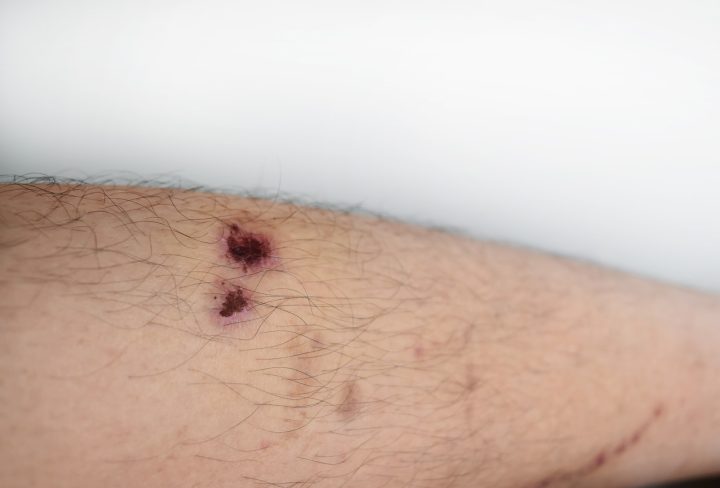It is a common skin condition usually found on the lower legs of people living with diabetes.
It is also referred to as pigmented pretibial patches or shin spots characterized by small, brown skin lesions.
They are common in people >50 years with a long history of diabetes.
The condition does not occur in everyone with diabetes, but it is estimated that up to 50% of people with diabetes will develop diabetic dermopathy.
Symptoms of Diabetic Dermopathy
It is usually asymptomatic, i.e., it does not cause any pain or itching.
Characteristics of the spots include:
• Pink, reddish, or brown round lesions
• Slightly indented into your skin (scaly appearance)
• Bilateral (appear on both of your legs or arms at the same time)
Over time, these spots may look like age spots.
Causes of Diabetic Dermopathy
The exact cause of diabetes-related dermopathy is unknown.
However, it could be due to prior trauma to your skin from an injury or extreme heat or cold temperature, especially if you have diabetic neuropathy (nerve damage caused by uncontrolled or long-time blood sugar).
Complications of Diabetic Dermopathy
• Diabetic Nephropathy (damage to kidneys)
• Diabetic Retinopathy (damage to the retina of the eye)
• Diabetes Neuropathy (damage to nerves)
Diagnosis of Diabetes Dermopathy
Medical history and Physical Examination to check for skin spots and rule out other possible skin conditions.
The doctor might perform a skin biopsy on one or more of the spots to rule out other possible skin conditions.
Treatment of Diabetic Dermopathy
There is no known treatment, and no specific treatment is required for diabetes-related dermopathy as the skin patches themselves are harmless.
Cosmetics may be used to cover up lesions. Some doctors may prescribe topical creams.
However, it is important to manage your diabetes, stay healthy and prevent complications.
Prevention of Diabetic Dermopathy
• Check Your Blood Sugar Regularly
• Take Insulin or Medication Regularly
• Consult Your Doctor Regularly
• Exercise Regularly and Eat Healthy
Self-Care Tips: Diabetic Dermopathy
Skin spots or lesions due to Diabetic Dermopathy are usually harmless and often improve over time.
Apply skin moisture and try to avoid any injuries to the legs to help prevent the development of some lesions.
When to see a doctor?
If you have new round, brown patches on your skin that do not go away.
If you are not diabetic (as diabetic dermopathy could be a sign of diabetes)
Diabetic dermopathy could be a sign of other diabetes complications. Hence, managing your diabetes carefully can help prevent complications.
Whom Does Diabetic Dermopathy Affect?
Diabetes-related dermopathy is more common in people with diabetes >50 years of age with a long history of diabetes.
It is more common in men than in women.

